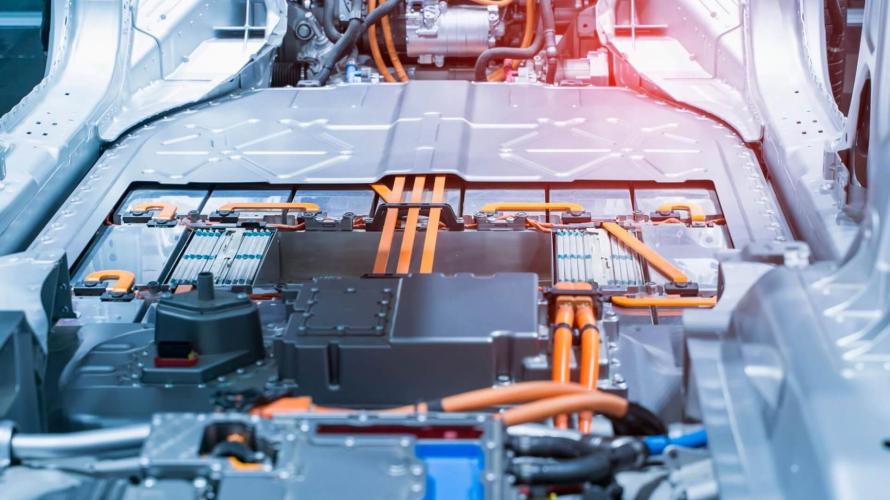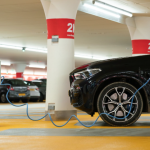(NOTE: This is Part 1 of “The Cutting Edge of Clean Tech.” To read Part 2 about the newest innovations like electric sports cars and roads that charge your car as you drive, click here .
Electric vehicles and other modes of clean transportation have positioned the industry on the cutting edge of research and development.
But what’s on the cutting edge of the cutting edge?
Here’s a list of some of the newest and most exciting advancements when it comes to the technology inside the vehicles themselves.
Lithium-Ion Batteries
How they work: Lithium-ion (li-ion) batteries accumulate charge by gathering lithium ions and electrons in a positively-charged cathode. They charge vehicles by sending those lithium ions through a separator to the negatively-charged anode. When the vehicle is in use, the process is reversed and ions flow from the anode to the cathode, generating electricity.
Current state of use: Li-ion batteries have been the go-to power source for battery-electric vehicles (BEVs) for years. They’re used in nearly every electric vehicle on the road today. From the Tesla Model S to the Chevrolet Bolt, if you buy an electric vehicle from a dealer today, odds are it’s powered by a li-ion battery.
And while research into the technology has existed since as early as 1912, that doesn’t mean li-ion batteries are outdated. Researchers continue to improve li-ion batteries in a number of ways.
Adding silicon to the li-ion battery’s anode has been proven to increase energy density with few downsides. By removing cobalt from the cathode, researchers at the University of Texas reduced the overall cost of the battery without sacrificing performance. And even small tweaks like reducing the amount of copper required or shaving microns off the width of the separator can lead to slow but steady decreases in cost and increases in performance.
Other Lithium Batteries (Lithium-Sulfur and Lithium-Air)
How they work: Lithium-sulfur batteries differ from li-ion batteries in that sulfur is used as the material for the battery’s cathode (positive end) instead of carbon. This allows for higher energy density and a lower cost of use due to the use of sulfur, which is cheaper than carbon.
Lithium-air batteries bring oxygen to the mix, introducing air at the cathode. The air reacts with the lithium ions, producing more electricity than regular li-ion batteries.
Current state of use: While both technologies are promising, they’re both still in the research and development phase. Problems like the buildup of harmful lithium sulfide (sulfur batteries) and lithium peroxide (air batteries) mean that both currently suffer from degradation and impracticality.
Solid-State Batteries
How they work: Solid-state batteries replace the liquid electrolyte found in li-ion batteries with a solid material that still facilitates the movement of ions. Without the need for a liquid component, solid-state batteries can be lighter and more dense while offering increased vehicle range and longer lifetimes.
Current state of use: This technology is still in development, with few vehicles on-road today. But the potential benefits are considerable and investments in research and development continue to grow.
Hydrogen Fuel Cells
How they work: In a hydrogen fuel cell, hydrogen passes through an anode (negative charge) and oxygen passes through a cathode (positive charge). The hydrogen breaks apart and passes through the system, creating electricity, then recombines at the cathode and forms water vapor when mixed with the oxygen.
Current state of use: On-road numbers of hydrogen fuel cell vehicles remain low due to high production costs and difficulty storing fuel. Further research and development could make hydrogen the future of sustainable transportation.
Hydrogen-powered vehicles are capable of providing the quick fueling time of internal combustion engine vehicles while offering zero harmful emissions. In addition to shorter fueling times than EVs, hydrogen-powered vehicles also offer greater range – around 300 miles.
Royal Dutch Shell has been an enthusiastic supporter of hydrogen fuel technology. Shell said it plans to increase production capacity for green hydrogen 10-fold at its Rhineland refinery in Germany by 2030. BP has also invested, spending $1.9 million to build a hydrogen export facility in Western Australia,
Photovoltaic Solar Cells
How they work: Solar-powered vehicles are equipped with photovoltaic (PV) cells that convert energy from sunlight into electricity. These cells can be spread out on nearly any flat surface on the vehicle, with the most common placements being on the roof, trunk and hood.
When sunlight strikes the PV cells, it excites electrons and allows them to flow, creating an electric current.
Current state of use: While energy from sunlight is nearly limitless and doesn’t pose the same logistical challenges as generating electricity from grids and storing it in batteries, solar vehicles come with their own set of obstacles to implementation.
Solar vehicles are largely impractical due to being unable to store large amounts of energy or charge quickly on the go. Issues like cloudy days, low rates of energy conversion in photovoltaic cells, and consumer unfamiliarity with the technology are also present. Companies like Aptera and Lightyear are working to bring models to fruition, but as of now, few, if any, solar vehicles are available in the consumer market.






